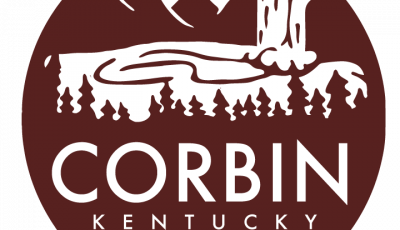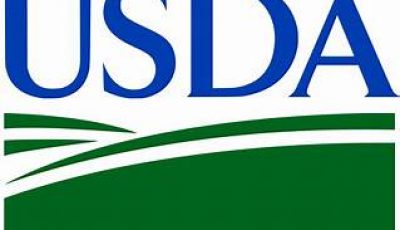Community feedback utilized in alternative plans for proposed logging project

Theresa Martin
After another town hall meeting in Williamsburg last week, community members are once again being tasked with letting U.S. Forest Service officials know their thoughts on proposed logging work in the Jellico Mountain region of the Daniel Boone National Forest.
This time, however, previous input from a 2022 public comment period has led to the introduction of an alternative plan that takes a big step toward the Forest Service and local residents being able to find some common ground.
Timm and Theresa Martin have been at the forefront of the efforts to convince the Forest Service to reduce the scope of their proposed logging project since details concerning the proposal first went public nearly two years ago. They were the organizers of a town hall meeting regarding the subject in November of 2022, and they called for another meeting last week at the Merry Jeffries Community Center in downtown Williamsburg in order to update concerned citizens on the current status of the project.
“The reason that we are here today is that a group of us have been working with the Forest Service on this logging project that they are proposing in our community,” Theresa Martin said to open up the latest town hall meeting, which saw between 40-50 people attending. “In 2022, we got a newsletter from a group called Kentucky Heartwood saying something about a logging project in the Jellico Mountains. As it turns out, the area encompasses many communities in Whitley and McCreary counties.”
“We got worried, so a group of us went over to Stearns and talked to Mr. Tim Reed, who is District Ranger, and we found out that this was real,” Martin continued. “In October, a proposal came out from the Forest Service and we found out that it is a 40-year project, with logging on about 10,000 acres, about 5,000 of which is to be one of three different types of clearcutting.”
These disturbing revelations prompted the Martins to organize the previously mentioned town hall meeting the following month, which saw about 100 people attending, including representatives of the U.S. Forest Service. After the meeting, over 300 public comments were submitted concerning the project. Now, some 18 months later, a new draft proposal has been released that includes new potential options for how to move forward.
What’s in the new proposal?
As reported in the May 1 edition of the News Journal, the newly proposed action by the Forest Service does relatively little to change the overall scope that was originally intended. While some of the clearcutting has been reduced, the overall acreage is still roughly the same and a timeline of 40 years is still suggested.
There are two alternatives, however. Alternative two, which most in attendance at last week’s meetingfelt would ultimately not be adopted, would basically see no action taken at all. Everything would be left as-is, and zero acres would be logged.
Alternative one, meanwhile, allows for logging to be done in the Jellico Mountains, albeit in a drastically reduced manner. It calls for roughly 3,000 acres to be logged, as opposed to 10,000, and lays out a timeline of 4-6 years, as opposed to four decades. It also does a lot to reduce the amount of clearcutting, with only a little over 1,000 acres being subjected to that type of harvesting.
Of course, this is not to say that additional logging could not be done in the area at a later date. The difference would be that, instead of trying to put forth a 40-year proposal encompassing all work from beginning to end, alternative one represents a more incremental approach. If future consensus were to be that additional logging is desired, a new process would need to begin where updated data gathering and reporting would be required. Another opportunity for public comments and objections would also be presented before work could proceed.
“There would be no alternative one if you all had not shown up, commented, and told the Forest Service what you think,” Martin said. “The Forest Service did listen to us. We checked. We sat with Mr. Reed and asked him ‘is this real?’”
Reed, who was not present at last week’s town hall discussion, confirmed this in a follow-up phone call Monday afternoon, saying, “We did take full consideration of the comments, which is how we developed alternative one,” he said, stating that some of the main concerns that led to the proposed alternatives related to the overall size and length of the project, as well as some of the harvest methods.
Reed stressed that people should take the time to go online and educate themselves on the project, its various proposals, and all the available supporting documentation. At that point, he encouraged submitting a public comment to the Forest Service so that the best possible conclusions can be reached by officials later this year.

Lauren Kallmeyer with Kentucky Heartwood
Stated intentions, and some clarifications
Timm Martin spoke about the Forest Service’s stated intentions when it comes to this proposed logging job, saying, “Much of the Jellico Mountains is mature forest, or 80-plus years old. It is approximately 72 percent of the area. While there are benefits to mature forests, the diversity of the forest is being lost due to that age, according to them. To counteract this loss, they are suggesting that they start cutting in order to bring in some younger trees.”
Martin also pointed out that the Forest Service is using data from the 2004 Daniel Boone National Forest management plan when it comes to their planning of this potential project. As he explained, this could be problematic.
“National forests are supposed to update their management plans every ten years, but in practice it is usually every 2-3 decades,” Martin said. “Nonetheless, they are basing this project on science and plans that were written 20 years ago, and obviously many things have happened in that amount of time.”
In response to this, Reed pointed out during Monday’s phone interview that, while a project may get underway using data from a dated forest management plan, that does not mean that any revised future plans will simply be ignored.
“What’s being proposed is what is in line with our forest plan,” Reed clarified. “A big part of our job is implementing those plans. Anytime that a forest plan is revised, however, if there is something in there that would change a project, we would take that into account.”
“Making a long-term decision now does not mean that you’ll always be locked into certain parameters,” Reed added. “If something needs to change, then we will make those changes, so that idea of using outdated data is a little misleading.”
Kentucky Heartwood Speaks
Also in attendance at last week’s meeting was Lauren Kallmeyer, Director of Kentucky Heartwood. Whitney Hamblin was also there on behalf of the conservation group.
“Kentucky Heartwood works to preserve and protect the Daniel Boone National Forest,” Kallmeyer said. “We have been around for about 30 years, and have had a lot of success fighting these types of proposals before.”
Kallmeyer pointed out that the last time logging work was done in the Jellico Mountains, it created a situation that allowed for a lot of invasive species of plants to begin rising up in some of the areas that had undergone clearcutting. She added that some invasive pest species actually prefer these non-native trees, which compounds the problem considerably.
In addition to this, Kallmeyer also said that clearcutting on steep mountains, such as the ones found in the Jellico Mountains, can result in conditions favorable for landslides.
As for why Kentucky Heartwood thinks there is such a big push to cut timber on this particular land at this particular time, Kallmeyer encouraged everyone to visit their website at www.kyheartwood.org/public-comments/jellico-comment-period and read the information found there concerning “timber targets.”
“We recently learned through Freedom of Information Act documents associated with a lawsuit from the Southern Environmental Law Center that the Forest Service has mandated timber targets that include a more than 400 percent increase in logging in the Daniel Boone National Forest,” Kentucky Heartwood shared via their website. “The documents clearly show that the DBNF is prioritizing the timber harvest mandate over other forest needs, including recreation, forest health, water quality, and more.”

A concerned citizen voices his opinion
Additional comments and concerns
Many who attended last week’s town hall took the opportunity to voice their concerns publicly. Some questions focused on the potential threats to endangered species of plants and wildlife found in the Jellico Mountains, while some were specifically concerned about the possibility for the introduction of harmful chemicals into the environment during the tree-removal process.
There was a general concern about the scope of the job as it was originally proposed, with a few professional loggers agreeing with those sentiments. One in particular said, “I’m pretty much against this, just because the government is involved. I’m not against logging, though. My dad logged. He logged private property where him and the landowner came to an agreement on how it was going to be done, and they selected the timber. The Lord put it here for us to use as a resource, but not for [someone] to come in and just clearcut it, abuse it, and then leave [us] with all the mess.”
Whitney Hamblin with Kentucky Heartwood picked up on that point, adding, “I would encourage all of you to get on the Forest Service’s website for this project and look at the supporting documents. Read the socio-economic report, because it is kind of a slap in your face.”
“Communities like yours in Eastern Kentucky have been taken advantage of forever,” Hamblin continued. “These projects come in and promise jobs and funding, but if you read the report it doesn’t specifically say that they are even going to use local logging companies, or locals at all. There is no promise of that, so those are things that need to be asked. If they are going to do this, then the money should go back to your community and not to some random company that they bring in from wherever.”
Editor’s Note: While the above-mentioned socio-economic report does not include any guarantees with regards to the hiring of local logging companies for the proposed job, it also does not rule out the possibility, mentioning the “potential to provide employment opportunities for members of the local communities,” and adding, “although difficult to predict, local employment increases due to this project might include work in logging projects, trucking activities, wood product mills, road maintenance and reconstruction, and intermediate treatments.” The report also highlights the potential for “local inputs to the community such as fuel/gas, hotel rooms, dining, shopping, etc. from people working in the project area.”
When Whitley County Judge Executive Pat White, Jr. was asked to give his thoughts on the situation, he responded saying, “The proposed clearcutting project in southern Whitley County causes great concern for many private citizens and the county alike. That area has been prone to flooding the last few years with homes and roadways being severely impacted at times. I can’t help but believe that clearcutting the mountaintops above this area would do anything other than exacerbate these issues.”
“I think that there are better ways to manage this area of forest that will cause less impact on the neighboring property owners, and the community as a whole,” White concluded.
Next steps
Reed explained Monday that a final environmental assessment and a draft decision notice would be released as part of the next phase of this project. A 45-day objection period will follow, at the conclusion of which Forest Service officials will make a final determination on how to proceed.
Reed re-iterated the importance of concerned citizens making their voices heard during the ongoing public comment period so that their input can be incorporated into the final environmental assessment and draft decision notice. “People need to voice their opinions, for sure,” he said. “We want to be able to take that into account. Anything that we look at during analysis we take very seriously.”
To view the slides and information presented at last week’s town hall meeting at the Merry Jeffries Community Center, visit www.jmlogging.com/may9. To learn more about the logging project, and to submit your public comment BEFORE May 24, visit www.fs.usda.gov/goto/dbnf/jellico.








